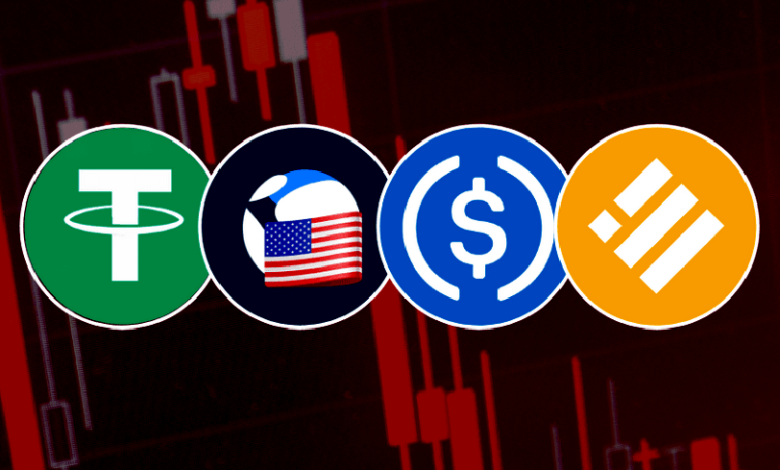Why is Cryptocurrency falling and TerraUSD crashing? “Now stablecoin is at Risk”

Another bad day for cryptocurrency markets. Following the enormous sell-off prompted by the insecurity of stablecoin TerraUSD, the market remains anxious (UST). This stablecoin erupted earlier this week after failing to maintain its dollar parity. UST is now trading below $0.045.
The Terra protocol’s LUNA token, which was designed to aid in the preservation of TerraUSD’s value, is in a similar state of disarray. LUNA, which peaked in value at $119.18 in early April, is today worth less than a penny after losing more than 99.99% of its value during the past twenty-four hours. The losses are substantial, with LUNA selling for $0.0002 at present.
Bitcoin Losses
During Asian trading hours earlier today, Bitcoin plummeted to a 24-hour low of $25,402. This was also a 52-week low, corresponding to December 2020 levels before Bitcoin surpassed $29,000. Despite a midday recovery, the original cryptocurrency is still more than 5 percent lower over the past 24 hours.
Bitcoin prices are already down over 39 percent since the beginning of the year and are trading well below their all-time highs of approximately $69,000 in November 2021.
Despite a 13 percent decline in the last twenty-four hours, Ethereum continues to trade below the psychological barrier of $2,000.
Risks Related to Stablecoins
Stablecoins are the elephant in the room, so let’s confront them now.
Stablecoins are one of the primary reasons for this week’s decline, and investors in cryptocurrencies should keep a close check on volatility in this sector, particularly UST and LUNA.
Critics of the Terra ecosystem say that the mechanism underlying TerraUSD was fundamentally flawed and that its unravelling was not unexpected. The Luna Foundation Guard (LFG), a nonprofit that maintains the Terra network, moved all of its holdings to Bitcoin exchanges in order to maintain the dollar peg of the stablecoin. LFG’s bitcoin reserve balance is now $0.
The initial stablecoin, Tether (USDT), has suffered as a result of the unfavourable sentiment. Tether lost its peg to the US dollar during Asian trading hours, falling to $0.97, but has subsequently returned to $0.99. Even a penny short of its dollar peg is cause for anxiety.
Now, cryptocurrencies are tightly correlated with equities.
Numerous cryptocurrency investors assert that Bitcoin is the digital-era equivalent of gold, a possible safe-haven asset and inflation hedge. However, the price behaviour of cryptocurrencies suggests that the market does not view these extraordinarily volatile assets as dependable wealth repositories during times of economic upheaval.
Gold has historically had a negative relationship with stock prices, which has thus far been observed in 2022. Gold is up almost 3 percent in 2022, whilst the S&P 500 is down approximately 16 percent year to date.
Fears of persistently rising US inflation and the likelihood of extremely harsh Fed policies to counteract it have exacerbated selling pressure on the stock market. In April, the consumer price index (CPI) climbed 8.3 percent annually, marking the highest rate of inflation in the United States since 1981.
The Fed increased interest rates by 50 basis points to a new target range of 75% to 1% earlier this month. In his post-announcement press conference, Fed Chair Jerome Powell indicated that additional 50 basis point rises were possible at the next two FOMC meetings.
Beginning in June, the Federal Reserve will allow $30 billion in US Treasury bonds and $17.5 billion in mortgage-backed securities to be removed from its balance sheet.
According to Brian Price, senior vice president of investment management and research at Commonwealth, the path of least resistance for risk assets is still to the downside.
According to Price, inflation, rising interest rates, and the war in Ukraine continue to receive the lion’s share of attention. Since the market is now devoid of any positive catalysts, it is not surprising that we are beginning the week under pressure.
The decline in the stock market demonstrates that investors are seeking refuge from the potential negative economic effects of the Fed’s tightening, but not in the cryptocurrency market.
Why is Cryptocurrency falling and TerraUSD crashing? “Now stablecoin is at Risk”
Another bad day for cryptocurrency markets. Following the enormous sell-off prompted by the insecurity of stablecoin TerraUSD, the market remains anxious (UST). This stablecoin erupted earlier this week after failing to maintain its dollar parity. UST is now trading below $0.045.
The Terra protocol’s LUNA token, which was designed to aid in the preservation of TerraUSD’s value, is in a similar state of disarray. LUNA, which peaked in value at $119.18 in early April, is today worth less than a penny after losing more than 99.99% of its value during the past twenty-four hours. The losses are substantial, with LUNA selling for $0.0002 at present.
Bitcoin Losses
During Asian trading hours earlier today, Bitcoin plummeted to a 24-hour low of $25,402. This was also a 52-week low, corresponding to December 2020 levels before Bitcoin surpassed $29,000. Despite a midday recovery, the original cryptocurrency is still more than 5 percent lower over the past 24 hours.
Bitcoin prices are already down over 39 percent since the beginning of the year and are trading well below their all-time highs of approximately $69,000 in November 2021.
Despite a 13 percent decline in the last twenty-four hours, Ethereum continues to trade below the psychological barrier of $2,000.
Risks Related to Stablecoins
Stablecoins are the elephant in the room, so let’s confront them now.
Stablecoins are one of the primary reasons for this week’s decline, and investors in cryptocurrencies should keep a close check on volatility in this sector, particularly UST and LUNA.
Critics of the Terra ecosystem say that the mechanism underlying TerraUSD was fundamentally flawed and that its unravelling was not unexpected. The Luna Foundation Guard (LFG), a nonprofit that maintains the Terra network, moved all of its holdings to Bitcoin exchanges in order to maintain the dollar peg of the stablecoin. LFG’s bitcoin reserve balance is now $0.
The initial stablecoin, Tether (USDT), has suffered as a result of the unfavourable sentiment. Tether lost its peg to the US dollar during Asian trading hours, falling to $0.97, but has subsequently returned to $0.99. Even a penny short of its dollar peg is cause for anxiety.
Now, cryptocurrencies are tightly correlated with equities.
Numerous cryptocurrency investors assert that Bitcoin is the digital-era equivalent of gold, a possible safe-haven asset and inflation hedge. However, the price behaviour of cryptocurrencies suggests that the market does not view these extraordinarily volatile assets as dependable wealth repositories during times of economic upheaval.
Gold has historically had a negative relationship with stock prices, which has thus far been observed in 2022. Gold is up almost 3 percent in 2022, whilst the S&P 500 is down approximately 16 percent year to date.
Fears of persistently rising US inflation and the likelihood of extremely harsh Fed policies to counteract it have exacerbated selling pressure on the stock market. In April, the consumer price index (CPI) climbed 8.3 percent annually, marking the highest rate of inflation in the United States since 1981.
The Fed increased interest rates by 50 basis points to a new target range of 75% to 1% earlier this month. In his post-announcement press conference, Fed Chair Jerome Powell indicated that additional 50 basis point rises were possible at the next two FOMC meetings.
Beginning in June, the Federal Reserve will allow $30 billion in US Treasury bonds and $17.5 billion in mortgage-backed securities to be removed from its balance sheet.
According to Brian Price, senior vice president of investment management and research at Commonwealth, the path of least resistance for risk assets is still to the downside.
According to Price, inflation, rising interest rates, and the war in Ukraine continue to receive the lion’s share of attention. Since the market is now devoid of any positive catalysts, it is not surprising that we are beginning the week under pressure.
The decline in the stock market demonstrates that investors are seeking refuge from the potential negative economic effects of the Fed’s tightening, but not in the cryptocurrency market.





